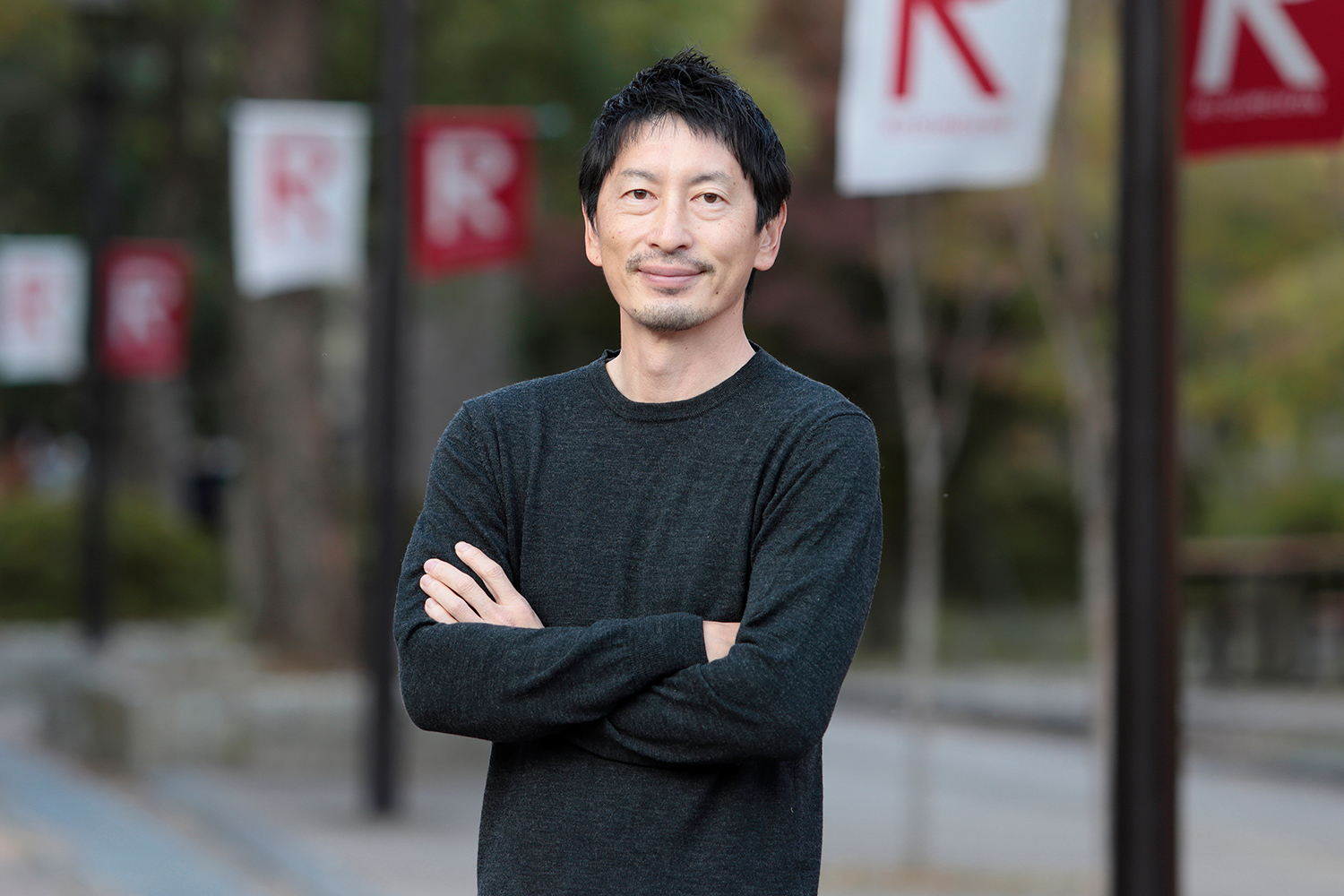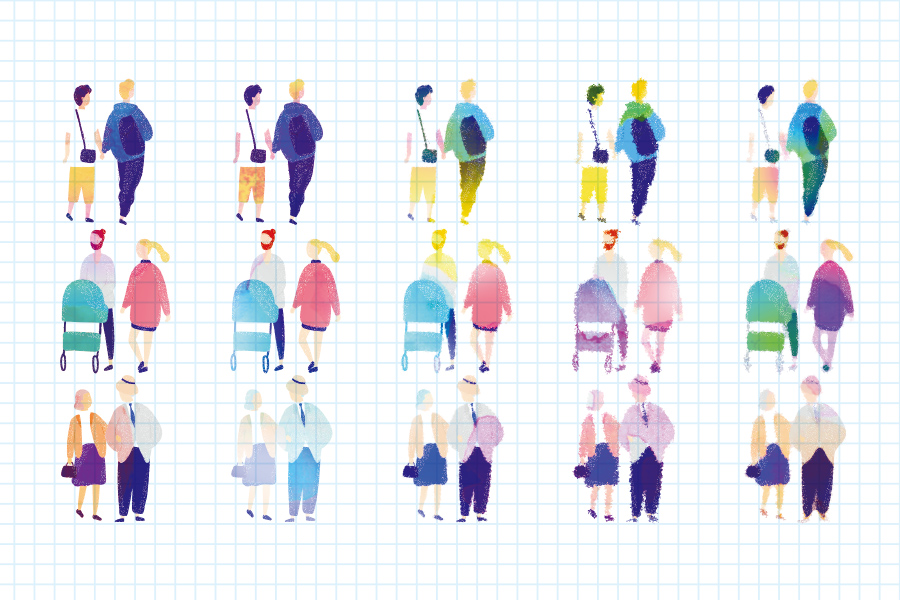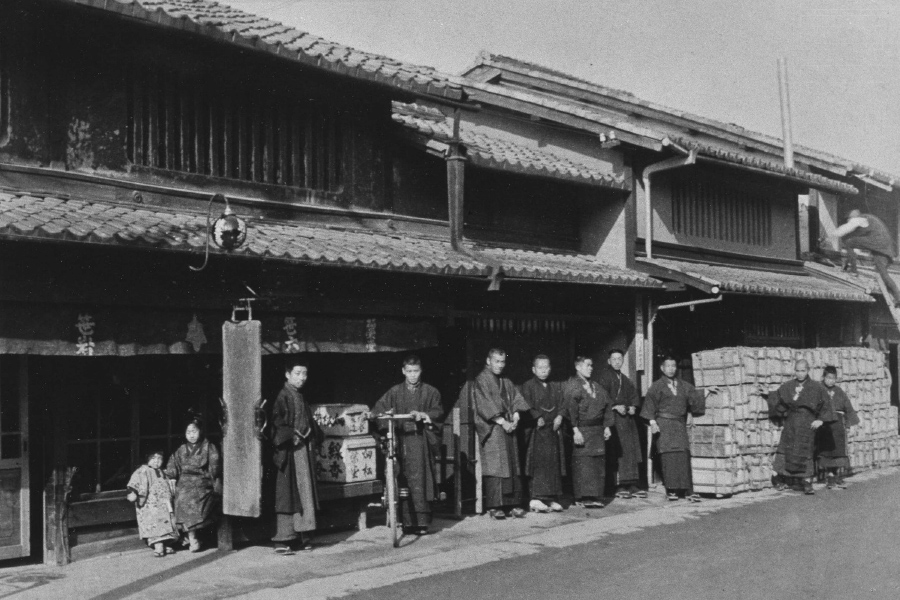STORY #1
The Changing Family Structure
with Time
Junya Tsutsui, Ph.D.
Professor, College of Social Sciences
Is it True that
“Progress has been Made with
Dual-Income Households”?
Family structures change with the times. One example, often cited as the symbol of the contemporary times, is the increase in dual-income households. According to the Cabinet Office’s White Paper on Gender Equality (2019 edition), the number of dual-income households surpassed that of single-earning households with full-time housewives in the early 1990s, and the gap doubled in 2018.
However, “There’s actually a great misconception concerning this narrative claiming ‘progress has been made with dual-income households’,” Junya Tsutsui points out. Specializing in family sociology and sociometric studies, Tsutsui has conducted extensive research on the nature of family and work, with a particular focus on women’s employment and work-life balance.
In the 2020 edition of the White Paper on Gender Equality, a new category <Trends in the Number of Households with Dual-Income by Wife’s Working Hours> was included based on Tsutsui’s suggestion. According to the report, though categorized under dual-income households, 6.82 million households have wives working on a part-time basis (less than 35 hours per week), far exceeding the 4.95 million households in which the wives work full-time (35 hours or more per week). Rather, the number of dual-income households in which members work full-time has been declining since it peaked in 1993. The Ministry of Internal Affairs and Communications’ Labor Force Survey (2018) also shows that among the “households consisting of a couple and children” in which the wife is between 25-34 years of age and the husband is employed full-time, only 18% are full-time dual earners, while 38% are full-time housewife households. In reality, Japan is still a society where the men are the primary breadwinners, and there is a big gap between this and the perception in society that ‘progress is being made with dual-income households’,” says Tsutsui.
More than 35 years have passed since the so-called Equal Employment Opportunity Law was enacted in 1986; why has the number of full-time dual-income households not increased? Tsutsui believes this is because “the way we work has not changed.” For a long time, overtime work and relocations were considered a normal component of working in many Japanese companies, and a system in which families could sustain themselves only with the support of a full-time housewife became the norm. This male-centric workstyle is now posing a challenge to the structure of families as well.
The declining birthrate is one such example. According to Tsutsui, the direct cause of the declining birthrate in Japan is the growing number of unmarried people and late marriages. Still, it may also be related to the fact that women find it difficult to work full-time after marriage and childbirth, and they would not be able to earn sufficient money to support their household. In fact, most economically advanced countries with high fertility rates are dual-income societies. “If we truly want to resolve the declining birthrate, it is not enough to reinforce the maternity systems and childcare leaves, for example. If we do not attenuate the male-centric workstyle per se, it is going to be difficult to achieve gender equality in the true sense of the word,” he says.
In recent years, the government has been promoting workstyle reform in earnest, and overtime work and transfers have been declining, especially at large corporations. “However, the increase in the number of dual-income households can alsoå have a negative impact,” says Tsutsui. While reminding us that “becoming a society of dual-income households is a means and not the end,” he also expresses his view that “from the viewpoint of increasing the birth rate, which is extremely important for society, Japan should shift to a working-style that encourages dual-income households some more.
Regarding the gap between the general perception and reality concerning the family, Tsutsui gives another intriguing example, that is, weakening family ties compared to the past. Many tend to think that there were many children per family in the past, and it was quite standard to have a large family with three generations living together. The family also had tighter relationships. However, looking back on history, the proportion of three-generation households was relatively small. In Japan, which used to be a patrilineal society, only the eldest son, his wife, and their children who inherited the family estate lived with their parents and grandparents, and the other children left the house. Accordingly, if there were many siblings, the proportion of three-generation households would naturally become smaller. In addition, because the average life expectancy was short, in reality, the period of cohabitation was also very short. Furthermore, the emotional relationship could not necessarily be said to be very close. “Until the Edo period, when the infant mortality rate was much higher than it is now, it is generally thought that parents invested less emotionally and showed less affection towards their children than they do today. Even in my grandparents’ generation, because of the large number of children and grandchildren, interest in each individual was not necessarily high,” Tsutsui explains.
The major changes in these family experiences and adult-parent-child relationships have been the decline in the birth rate and the increase in longevity. “Particularly, the impact of the decline in the number of siblings is greater than we can imagine, but this is not properly recognized,” according to Tsutsui. Changes in the family structure due to demographic shifts create various problems, such as in nursing care and maintaining family graves. In addition, today, adult parents, their children, grandparents, and a fewer grandchildren maintain close relationships—both in terms of physical proximity and mental closeness—perhaps for more than 30 years in some cases. No other society in history has ever had such a close relationship between parents and their children for such a long period.
Tsutsui predicts an even bigger impact in the future will be the lack of family formation. The percentage of unmarried people in their lifetime is on the rise, and the number of single-person households will likely increase rapidly. “There is no panacea for these issues, but we need to attenuate the male-centric workstyles and create a system that is easier for dual-income households as well as update our perception of what families should be according to reality,” Tsutsui says. Misperception of facts based on assumptions runs the risk of leading the nation to erroneous or ineffective policies and measures. Tsutsui’s research is of great significance for the future of Japanese society and its families.

- Junya Tsutsui, Ph.D.
- Professor, College of Social Sciences
- Specialty: Sociology
- Research Themes: Sociometric studies on marriage, family, women’s labor force participation, etc.





























